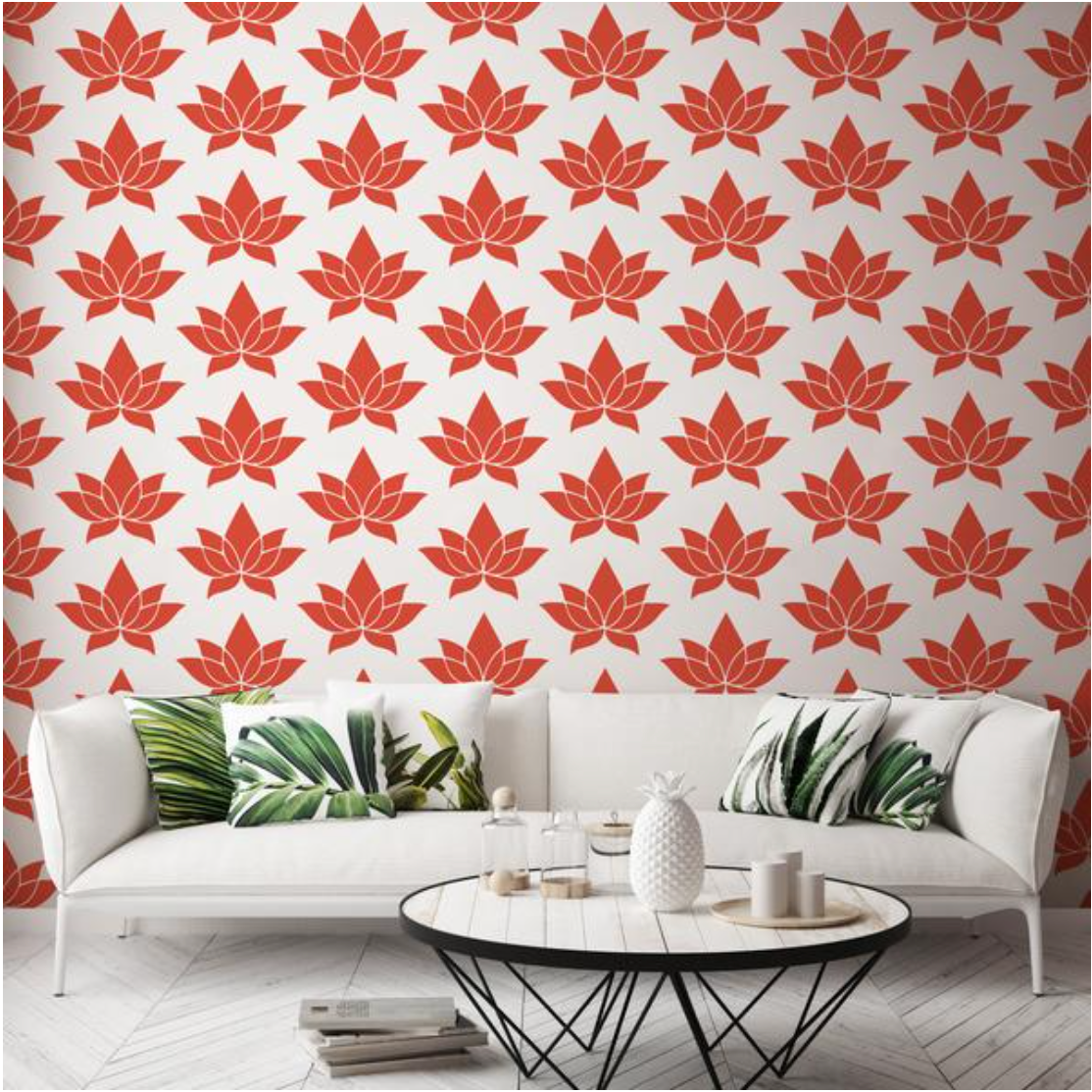How To Measure For Wallpaper: A No-Fail Guide
A fresh wallpaper vibe can totally transform any room. But installing new wallpaper is a big commitment - if you mess up those measurements, you're stuck with an amateur disaster zone instead of an Instagram-worthy retreat.
Gaps, mismatched patterns, and ill-fitting corners will haunt you every time you enter the room. Trust us, you don't want to live with that kind of wallpapering remorse.
Don't sweat it though - we'll walk you through exactly how to measure for wallpaper like a pro.
Get it right by following these simple steps, and you'll be kicking back admiring your flawlessly papered, picture-perfect paradise in no time.
So grab those essential tools and get ready to work! With a little patience and precision, you've got this. Your future self will thank you every time you enter that beautiful new space.
Tools You'll Need
For starters, assemble this rookie wallpaper measurer's toolkit:
- Trusty tape measure (go vintage for style points)
- Pencil for marking measurements
- Notebook for recording numbers
That's all there is to it. Simple but essential for nailing those measurements.
Determine the Wall Surface Area
Correctly measuring your total wall surface area is crucial - this number determines how much wallpaper you need to buy. Miscalculate, and you'll either run out halfway through and have to make a frantic re-order, or end up with a bunch of expensive leftover rolls. Neither scenario is ideal.
To get started, slowly and meticulously run your tape measure across each wall's full length and height. Don't just measure the straightaways though - you need to account for every last inch by wrapping the tape into each corner and around windows, doors, and other obstacles. Be as precise as a surgeon here.
As you go, jot down each wall's dimensions in your notebook. Double check your numbers - one small missed measurement can throw it all off. Once you have all the walls recorded, do the math to calculate their total combined square footage. For each wall:
- Multiply the length by the height to get the square footage of that wall
- Example: Wall 1 is 12 feet long x 9 feet high = 108 square feet
- Repeat for all walls, writing down each wall's square footage
- Then add up all the individual wall square footages to get the total square footage of the entire room
So if you had:
Wall 1 = 108 sq ft
Wall 2 = 108 sq ft
Wall 3 = 80 sq ft
Wall 4 = 80 sq ft
108 + 108 + 80 + 80 = 376 square feet total for the room
Getting this total square footage number correct is crucial as it tells you how many rolls of wallpaper to order for the project. We recommend double-checking your math just to be sure it's accurate. Better safe than short on wallpaper!
Account for Pattern Repeats
Using a patterned wallpaper instead of a solid print? Then pay close attention to the pattern repeats. They need to match up seamlessly across the walls with no weird bunching, skips or misalignments. Even the slightest mismatch will be super obvious and throw off the whole aesthetic.
Before ordering, locate the pattern repeat measurement on the wallpaper sample. This tells you how often the pattern cycles, like every 12 inches for example. Make note of this number. Then, calculate how many times the full pattern needs to repeat across each wall based on the wall's length. Account for both the horizontal and vertical pattern repeating.
From there, determine the total pattern repeats required for every wall in the room. This number combined with your total square footage measurement allows you to calculate how many rolls to order. Overestimate if needed to have enough for proper pattern matching, especially across corners and ceilings.
Calculate Wallpaper Quantity
With the wall square footage and pattern repeat numbers calculated, you're ready to determine how many rolls of wallpaper to order.
However, it's highly recommended to build in some wiggle room by adding 10-15% extra onto your final roll number. Those few extra rolls could be a lifesaver if you accidentally miscalculate a measurement, encounter an unseen obstacle, or need to do substantial pattern matching.
The good news is that Mitchell Black makes it as easy as possible to measure and get the math correct! We also take the guesswork out of pattern repeats! All of our rolls are 2 feet wide and 10 feet high making it the perfect height for the majority of walls (for walls taller than 10 ft, custom sizing is available). All rolls match patterns at the top of the roll. No need to worry about pattern repeats. Simply calculate the width of all of your walls and divide by 2 to determine the correct number of rolls needed.
Example room:
Wall 1 = 10.5 ft wide
Wall 2 = 12 ft wide
10.5 + 12 = 22.5 feet of total wall width.
Divide that number by 2 and round up = 12 rolls + we always recommend 10-15% coverage.
Consider Wall Conditions
Before placing that wallpaper order, take a good look at your wall conditions. Textured walls, curved archways, or built-in shelving can seriously throw a wrench in your measurements. Make note of any tricky areas and adjust your numbers accordingly.
Double Check, Then Triple Check
Don't start celebrating those flawless measurements just yet. Take the time to double check all your numbers, making sure everything is precise down to the last half-inch. Seriously - nothing's worse than ruining a whole room due to a stupid miscalculation.
Final Wallpapering Wisdom
Phew! You made it through our wallpaper measurement bootcamp. Now, you're ready to order like a certified professional and get to that install. Just remember: measure twice, order once.
Here at Mitchell Black, we offer some of the coolest wallpaper options around. In both traditional and peel and stick, we have geometric wallpaper, edgy wallpaper, wall murals, and so much more.
Do it right, and you'll have a wallpapered dream room to show for all your hard work.







Leave a comment